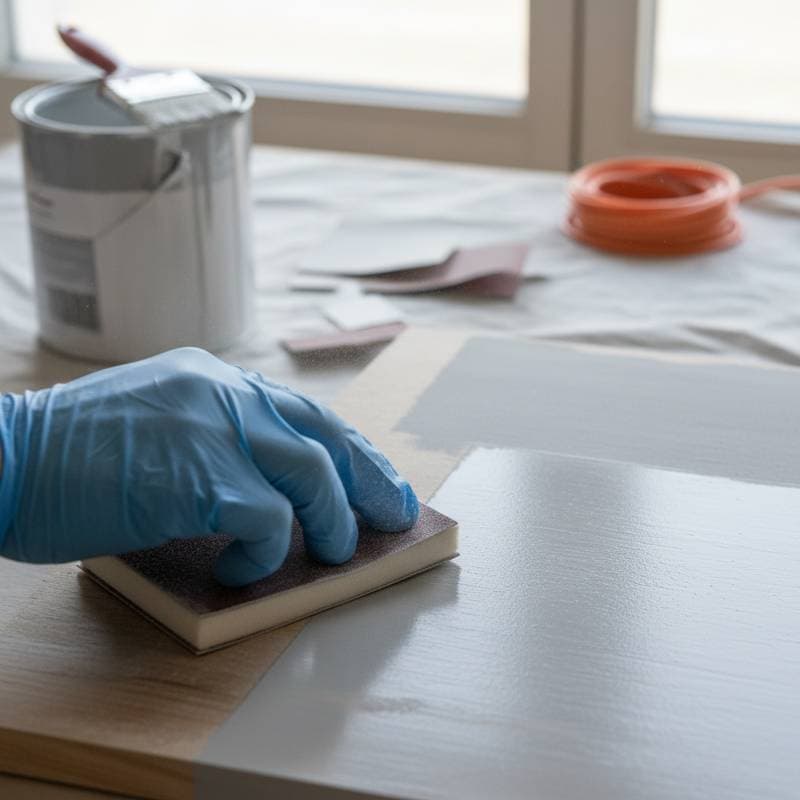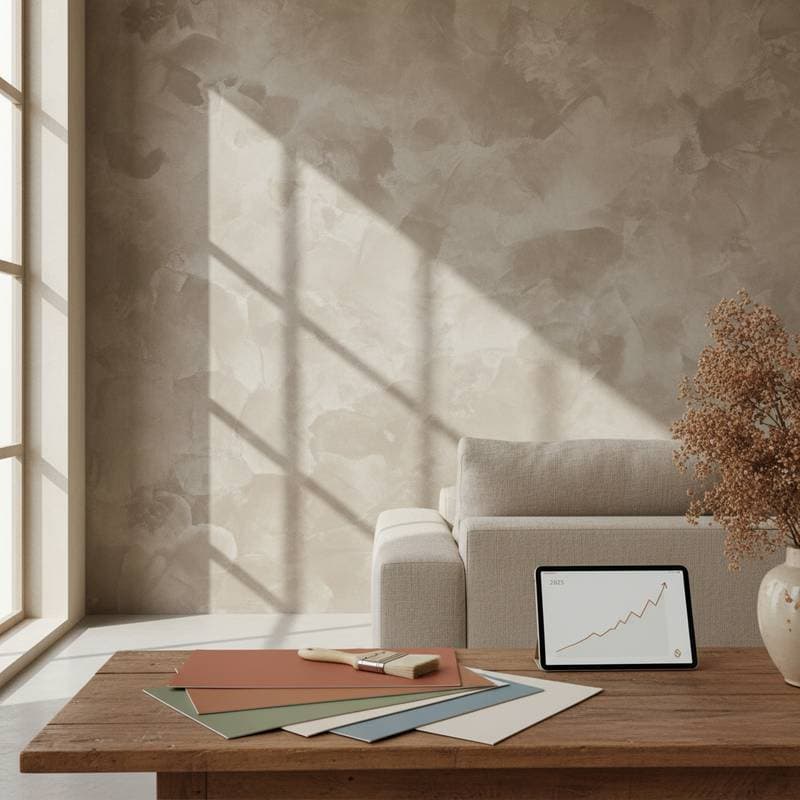The Resurgence of Terracotta and Burnt Orange in 2025
Warm hues lead the charge in interior design trends, with terracotta and burnt orange at the forefront. Previously viewed as rustic or outdated, these earthy shades now integrate seamlessly into contemporary settings. Homeowners embrace their ability to add layers of warmth, character, and intimacy to any room. Beyond visual appeal, this trend fosters emotional bonds, promotes relaxation, and delivers enduring style.
Why These Shades Captivate
Terracotta and burnt orange evoke the soothing essence of sun-warmed soil and natural elements. They ground spaces in comfort, particularly when combined with subtle neutrals or organic materials like wood and linen. A terracotta feature wall transforms a bland area into an inviting haven, whereas burnt orange details inject energy without dominating the palette.
This surge aligns with a cultural pivot toward nature-inspired aesthetics. People increasingly favor hues that evoke serenity over stark, impersonal tones. Terracotta and burnt orange bridge sentimental roots with refined modernity, suiting diverse lifestyles from urban apartments to suburban retreats.
Painting Cost Essentials for Terracotta and Burnt Orange
Repainting interiors in terracotta or burnt orange generally costs between $2,000 and $5,500 for a typical project. The average expenditure reaches $3,800 for painting three standard rooms with quality paint and expert application. Costs fluctuate based on scope, wall conditions, and material selections.
Costs by Room Dimensions
- Small Room (up to 150 square feet): $500 to $1,200
- Medium Room (150 to 300 square feet): $1,200 to $2,000
- Large Room (300 to 500 square feet): $2,000 to $3,500
Per-Square-Foot Breakdown
Expect $3 to $6 per square foot for professional services using these colors, covering:
- Materials: $1 to $2 per square foot
- Labor: $2 to $4 per square foot
- Preparation: $0.50 to $1 per square foot
- Extras: $0.25 to $0.75 per square foot for edges or highlights
These figures serve as baselines; specific circumstances adjust the totals.
Key Influences on Project Expenses
Grasping cost drivers enables precise planning and prevents budget overruns.
Wall Readiness: Surfaces marred by damage, peeling layers, or irregularities demand thorough sanding and priming. Such work adds $150 to $400 overall.
Paint Grade: Superior formulas offer richer saturation, vital for vibrant terracotta and burnt orange. They ensure uniform application and fade resistance, raising expenses by $20 to $60 per gallon over basic varieties.
Shade Intensity and Layers: These deep colors often require at least two applications for consistency. A color-matched primer becomes necessary for bold versions, elevating supplies and effort.
Space Intricacies: Vaulted ceilings, ornate moldings, or varied focal points extend working hours. Intricate designs can inflate bills by 15 to 25 percent.
Location-Based Pricing: Urban zones with elevated demand command up to 20 percent higher fees than rural or suburban areas.
Paint Options and Pricing Tiers
| Paint Type | Basic Range | Standard Range | Premium Range | Key Differences |
|---|---|---|---|---|
| Flat or Matte Finish | $25 to $40 per gallon | $40 to $60 per gallon | $60 to $90 per gallon | Muted appearance, conceals flaws, yet harder to maintain |
| Satin or Eggshell | $30 to $50 per gallon | $50 to $70 per gallon | $70 to $100 per gallon | Moderate luster, simple to wipe clean, suitable for high-traffic zones |
| Semi-Gloss | $35 to $55 per gallon | $55 to $75 per gallon | $75 to $110 per gallon | Shiny surface, robust against wear, perfect for moisture-prone areas |
Assessing Value and Returns
A terracotta or burnt orange refresh boosts home allure and market worth. These welcoming shades attract buyers across styles, aiding resale staging. Expect 60 to 80 percent ROI from a polished application, amplified by balanced pairings and illumination.
Longevity enhances fiscal benefits. Top-tier paints withstand wear and discoloration, reducing future upkeep. Initial investments yield sustained savings through infrequent renewals.
Practical Ways to Control Expenses
Achieve quality outcomes affordably with targeted approaches.
- Handle Initial Tasks: Patch imperfections, dust surfaces, and strip loose paint prior to crew arrival to shorten on-site time.
- Target Applications: Opt for focal walls in these hues rather than full coverage, minimizing materials and hours.
- Time Purchases: Shop during promotional events at suppliers for reduced rates.
- Group Efforts: Schedule connected areas together for discounted labor packages.
- Choose Balanced Sheens: Satin varieties deliver resilience at moderate prices.
Building a Solid Financial Plan
Define project boundaries early, specify coverage areas, and solicit three estimates from contractors. Factor in a 10 to 15 percent reserve for surprises like extra layers or fixes.
Sample Budget for a Medium-Sized Living Area
- Materials and Tools: $200 to $400
- Workforce (two applicators, one to two days): $1,000 to $1,800
- Setup and Base Coats: $150 to $300
- Details and Edges: $100 to $200
- Overall Projection: $1,450 to $2,700
This assumes even surfaces and standard paints; expansions raise figures.
Selecting and Applying Colors Effectively
Sample shades in situ before committing, as illumination alters perceptions. Daylight accentuates golden undertones, while bulbs may warm them to rustier notes. Apply test patches to confirm harmony with your intent.
Balance with muted bases such as ivory, sand, or stone gray. For drama, incorporate forest greens or slate accents. These flexible tones support cozy vibes or polished looks alike.
Experts refine executions, like matte bases with glossy borders for texture. They guarantee flawless results, sharp boundaries, and enduring performance, surpassing amateur attempts.
Realizing Lasting Home Enhancements
Embracing terracotta and burnt orange yields spaces that soothe and inspire daily. These choices not only refresh aesthetics but also cultivate personal sanctuaries. With informed budgeting and professional input, your update delivers immediate joy and future value.
Frequently Asked Questions
1. What is the typical expense for a terracotta or burnt orange paint job?
Full interior overhauls average $2,000 to $5,500. Isolated room efforts fall between $500 and $2,000, influenced by materials and dimensions.
2. Which elements most affect pricing?
Preparation needs, paint levels, coat counts, and wage variations dominate. Layout details and height also contribute. Optimal priming proves crucial for saturated colors.
3. How can I save money without sacrificing quality?
Prep independently to cut labor, focus on accents to limit scope, purchase on sale, bundle rooms, and select cost-effective sheens like satin.
4. Should I hire professionals or attempt this as a DIY project?
Professionals ensure precision, efficiency, and durability, particularly for complex shades requiring multiple layers. DIY suits minor tests but risks uneven outcomes and extra costs from errors.
5. How do I budget for unexpected costs?
Allocate 10 to 15 percent extra for contingencies like additional priming or repairs. Review quotes thoroughly and prioritize versatile paints to minimize revisions.
6. When is the best time to start painting for the lowest cost?
Off-peak seasons, such as late fall or winter, yield better rates due to lower demand. Schedule ahead to secure availability and promotions.



